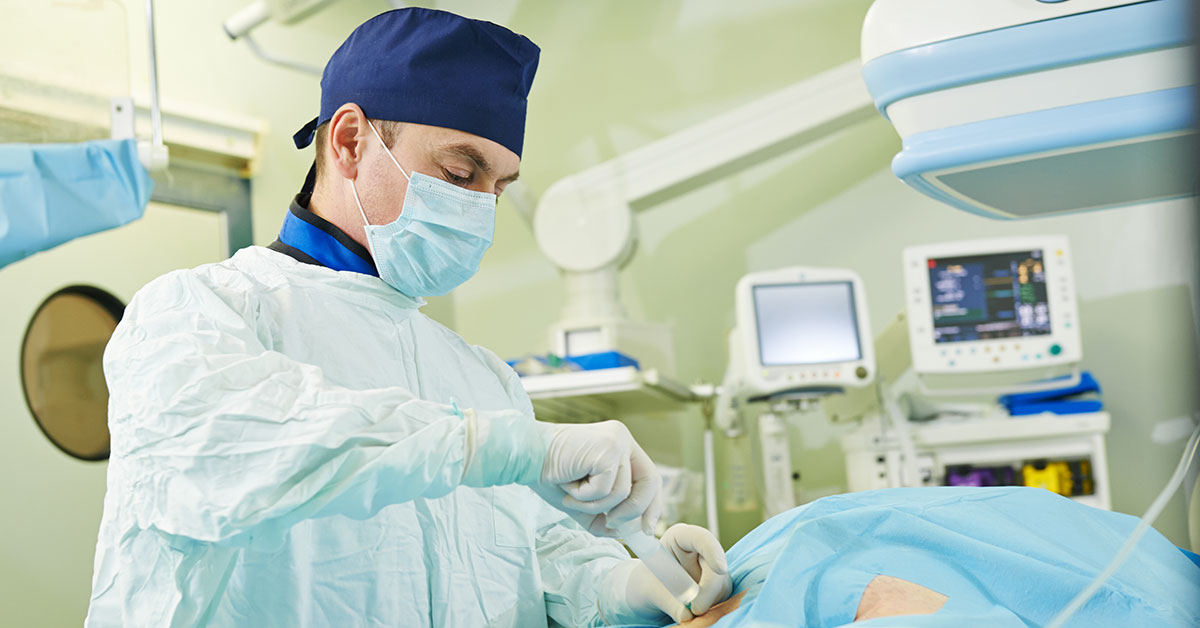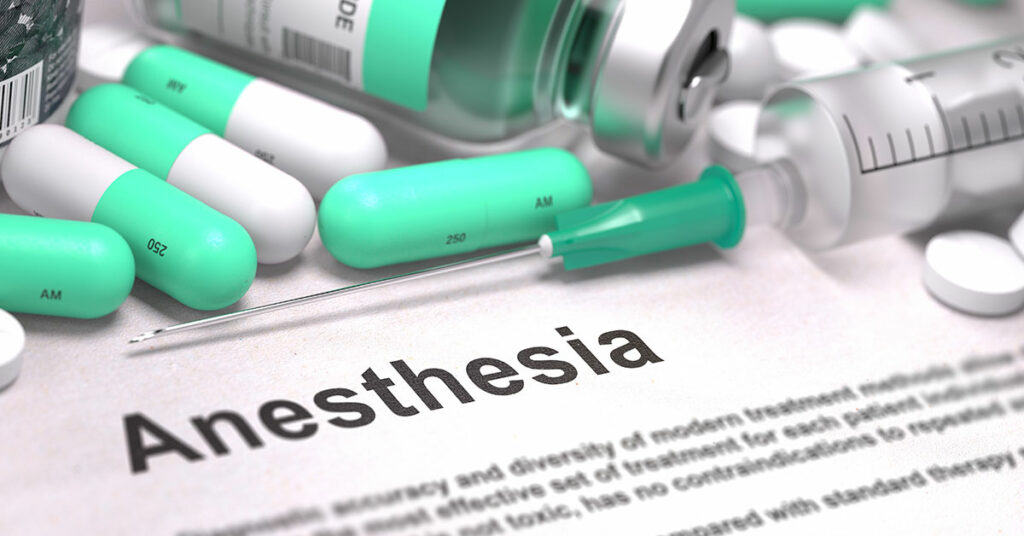
According to an article by Mental Health Daily, research has shown that medical doctors are nearly 1.87 times more likely to die committing suicide than people belonging to other professions. Among healthcare professionals, particularly anesthesiologist physicians have been reported to be at a higher risk. Six studies that consisted of information on suicidal behavior reported suicidal ideation in 3-25% of individuals and four studies showed suicide attempts in 1-2% of the individuals.
What People Think vs. What It Really Is
Being a medical student myself, this finding was intriguing for me because the general perception (which can also be called a common misconception) of a physician anesthesiologist is that they just “put a patient to sleep” before surgery and then take a back seat and leave the ground for the surgeons.
I asked my professor who specialized in this field of medicine what a physician anesthesiologist did and why they would have a higher risk of dying by suicide. She explained how they had multiple factors that lead to very high stress levels, which predispose them to burnout, fatigue, substance abuse, poor mental health, and suicide.
What Is A Physician Anesthesiologist?
Physician anesthesiologists are healthcare service providers just like any other general physician or surgeon. Their specialization is in critical care medicine, management of pain in chronic illnesses, and anesthesia care, and they possess the essential expertise to recognize problems and treat them.
Physician anesthesiologists spend around 12 to 14 years in education which includes medical school, and 12,000 to 16,000 hours of extensive medical training. They are actually perioperative physicians, where “peri” means all- rounder. So an anesthesiologist physician is responsible for patient care throughout the duration of their surgical experience.
What Does A Physician Anesthesiologist Do?
Physician anesthesiologists are an essential element of the surgical panel in the operation theatre, which includes nurses, surgical technologists, surgeons, and surgical assistants. The main role of anesthesiology is the administration of anesthesia which entails the use of inhaled, topical, or injected medications prior to a surgical procedure to induce numbness or a loss of sensation in that region or the whole body.
To administer anesthesia in a safe way, the physician anesthesiologist must have skilled expertise in pharmacology, physiology, and the skills used to maintain vital organ functions during an anesthetic procedure. This includes the different methods of pulmonary (lungs) and cardiovascular (heart) resuscitation in the case of these organ systems failing all of a sudden, the use of hemodynamic monitors to keep a close check on and measure blood pressure, and the management of breathing and airways.
Outside the operation theatre, the job description of a physician anesthesiologist includes helping with traumas, general emergencies, intensive care units, and acute and chronic pain management.

Before the Operation
From the perspective of the procedure, an anesthesiologist’s work starts way before the surgery. Preoperatively (before the operation), a physician anesthesiologist will have a session with you and your surgeon and get all the information regarding the procedure. They will evaluate your fitness for anesthesia by conducting an assessment.
- Meeting the Patient
The evaluation involves an analysis of your present medical history, your past medical history (specifically diseases that affect the lungs, kidneys, liver, or heart), your past surgical history (including any hypersensitivity reactions to anesthesia), allergies to anything that may include drugs or food or any non-drug allergen, current medication use (putting special focus on steroids, drugs that may prolong the bleeding time such as aspirin and blood thinners like warfarin or heparin, or medications used in diabetes), and tobacco, alcohol or drug abuse.
- Planning the Way Forward
The anesthesiologist will also have a look at your medical record file and review important lab results like electrocardiogram (ECG) readings, blood panels, chest X-rays, and stress test results. They will construct a comprehensive plan of administering anesthesia during your procedure, (which is different in each patient) and also inform you about the possible consequences and risks of anesthesia.
During the Operation
The physician anesthesiologist prepares you for your procedure depending on what type of anesthesia they have planned to administer. The type chosen highly depends on what surgery the patient will be having and their current medical status. The types of anesthesia are:
- General Anesthesia
During this type of anesthesia, there is no consciousness, no awareness, or sensation. If the medication is a gas or vapor, it will be delivered through a breathing tube or breathing mask. Some medications are administered through an intravenous (IV) line to cause sleep, treat pain, and cause muscles to relax. This method is used for major operations like open-heart surgery, total knee, or total hip replacement surgery.
- Regional Anesthesia
This makes a large region of the body sensationless to prevent the patient from sensing pain. This is done by injecting local anesthesia (numbing medication) near the group of nerves that supplies feeling to that specific area. This type of anesthesia is given through a catheter, which is a small tube, or an injection.
This method is used for spinal blocks and epidurals given during childbirth. Examples also include a brachial plexus block to numb the shoulder and arm or a femoral nerve block to numb the thigh and knee.
- Monitored Anesthesia or IV Sedation
In this type of anesthesia, medications are usually given through an IV so that all the muscles in the patient’s body relax and they become drowsy. There can be varying levels of consciousness depending on how much anesthesia has been administered. In minimal sedation, you will be drowsy but still be able to talk, and after deep sedation, you will not be able to remember anything about the procedure. This is used for minimally invasive procedures like colonoscopies or endoscopies.
- Local Anesthesia
This is induced by an injection or a topical cream that numbs a small part of the body where the operation is to be performed. It provides pain relief while maintaining alertness and consciousness. This type of anesthesia is used in dental procedures and suturing of deep cuts.
- Staying Vigilant Throughout the Surgery
Physician anesthesiologists also provide a continuous medical assessment of the patient by monitoring and controlling their vital life functions that include body temperature, heart rate and rhythm, breathing, body fluid balance, blood pressure, and oxygen saturation. They keep a check on the patient’s level of consciousness and pain to make sure that the conditions for surgery are optimal and safe.

After the Operation
Once the operation has been completed, the physician anesthesiologist stops the anesthetic administration and monitors all the vitals to see if the patient is recovery is smooth. They will also watch the patient for any side effects or complications and treat them as needed. They may also conduct an individual postoperative assessment that checks for anesthesia complications such as nausea, altered lung function, change in the mental status, eye or nerve injury, or sore throat.
- Discharging the Patient
A physician anesthesiologist is the key person who decides when a patient has fully recovered from the effects of anesthesia and can be sent home. They create a plan for recovery and prescribe pain medications after the patient goes home.
Dealing with Pain
Physician anesthesiologists are the doctors that deal with conditions that precipitate intractable pain like that of burns, the pain from cancer, diabetic neuropathies, fibromyalgia, and herpetic neuralgias. Anesthesiologists can decide to do pain-relieving procedures, counsel patients and their families about the condition and pain, and can also give rehabilitative services to the patients.
See Also: A Day In The Life Of A Dermatology Physician Assistant
Conclusion
All in all, physician anesthesiologists are a very integral part of the healthcare system and have one of the most stressful jobs in the medical field.
Precision Hub offers various reading materials and information that you can find on our website as complimentary resources. These articles are intended to help medical students and healthcare professionals to keep updated on the latest trends and developments in the industry.
Please check out our blog section to review everything from food allergies and their symptoms to what you need to know about chronic diseases to the common challenges faced by physician anesthesiologists and general physicians today.







No comment yet, add your voice below!